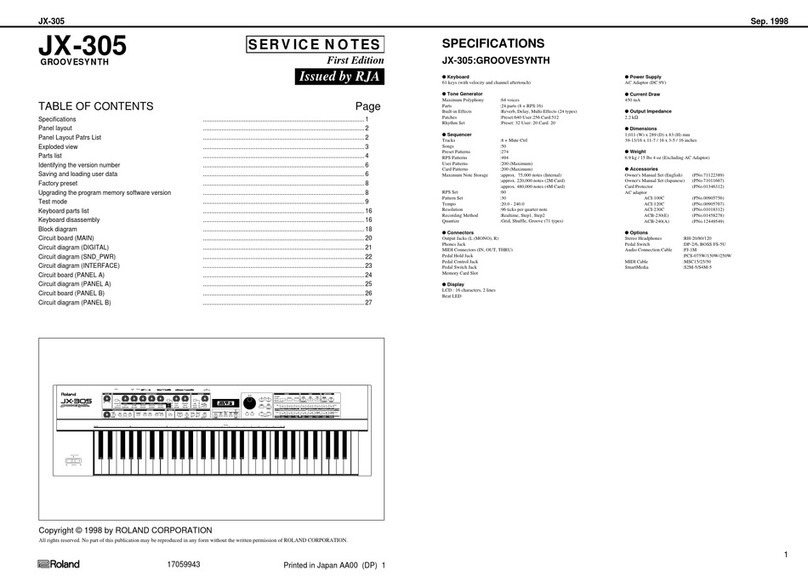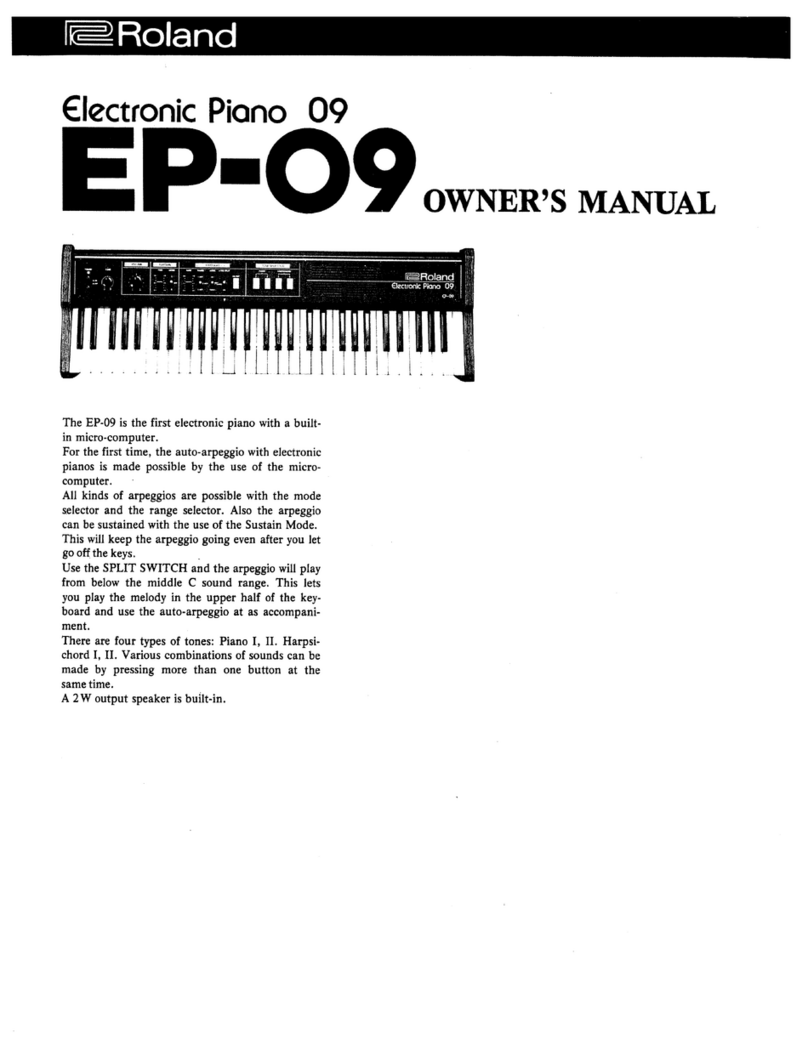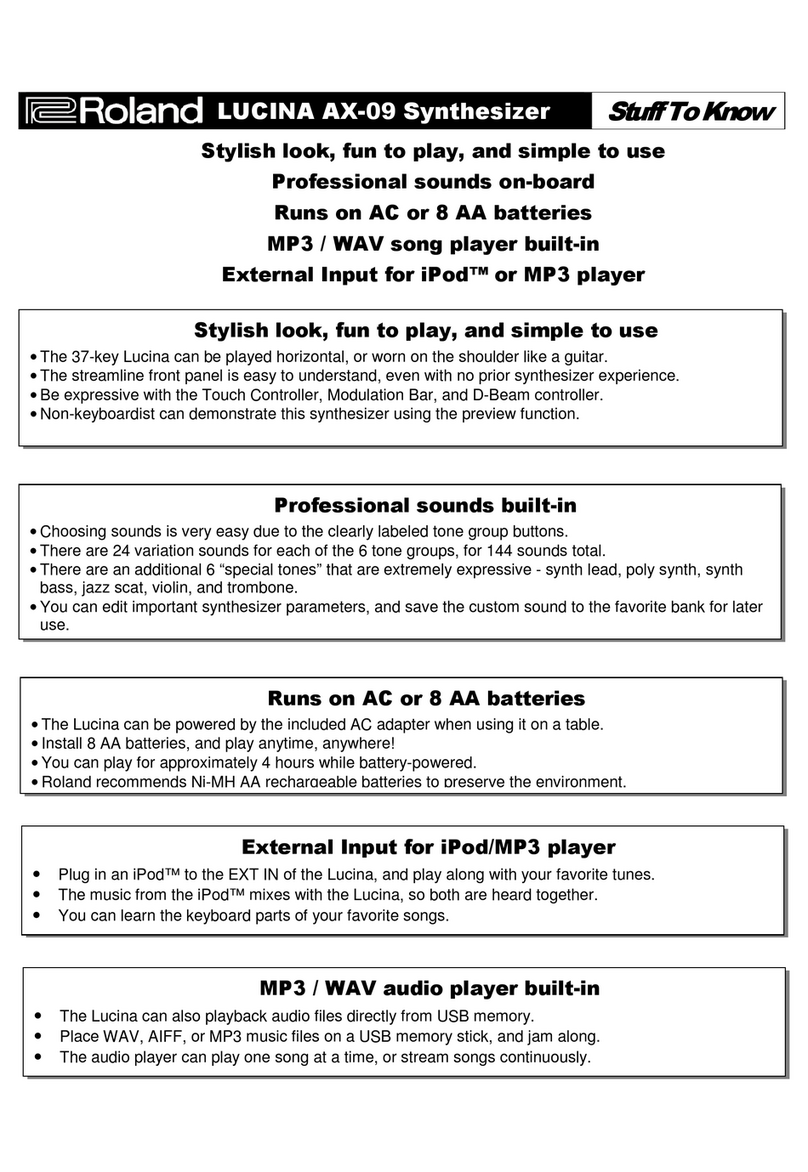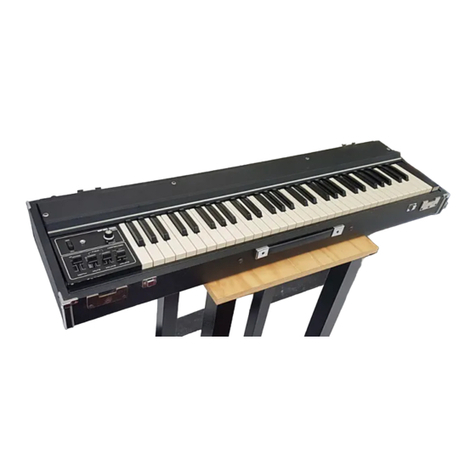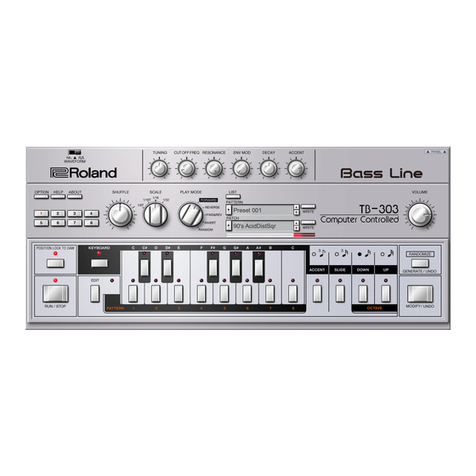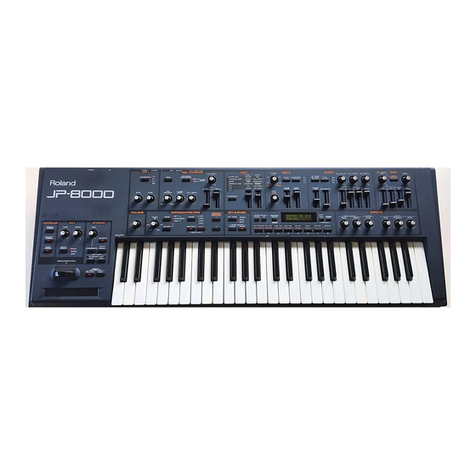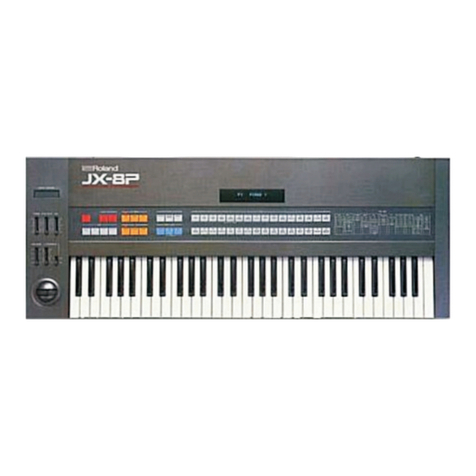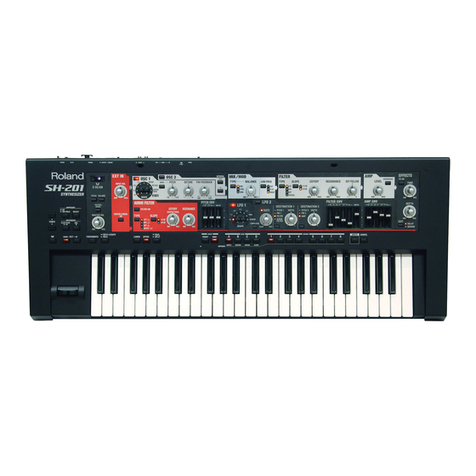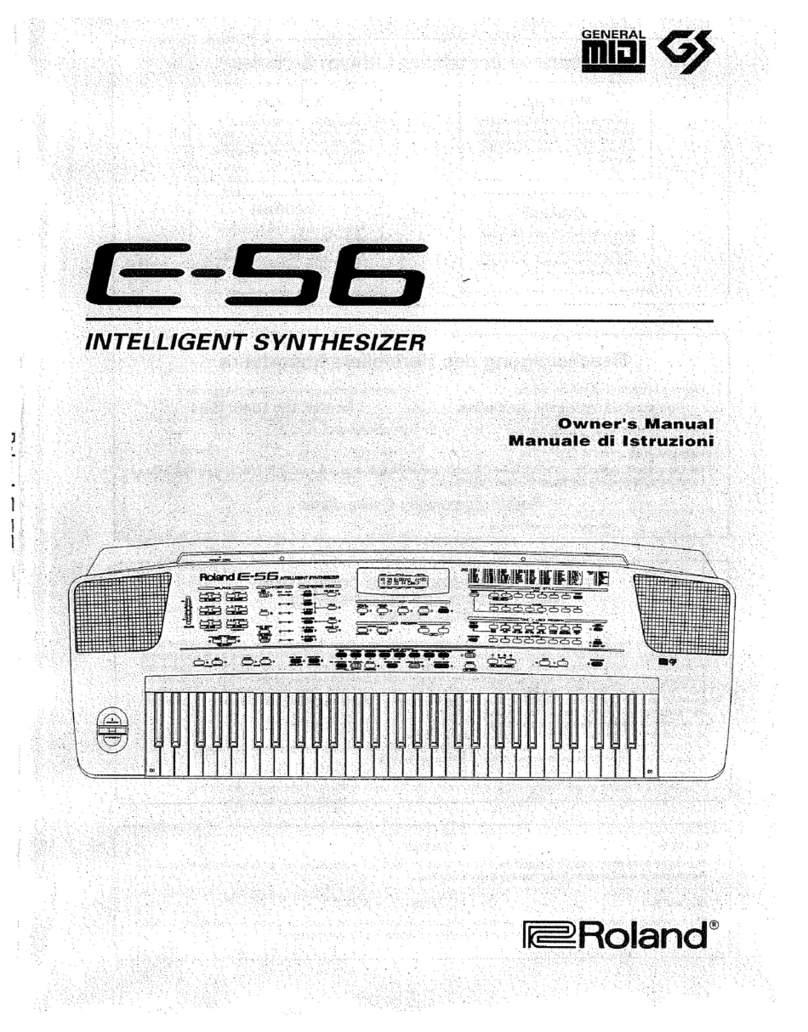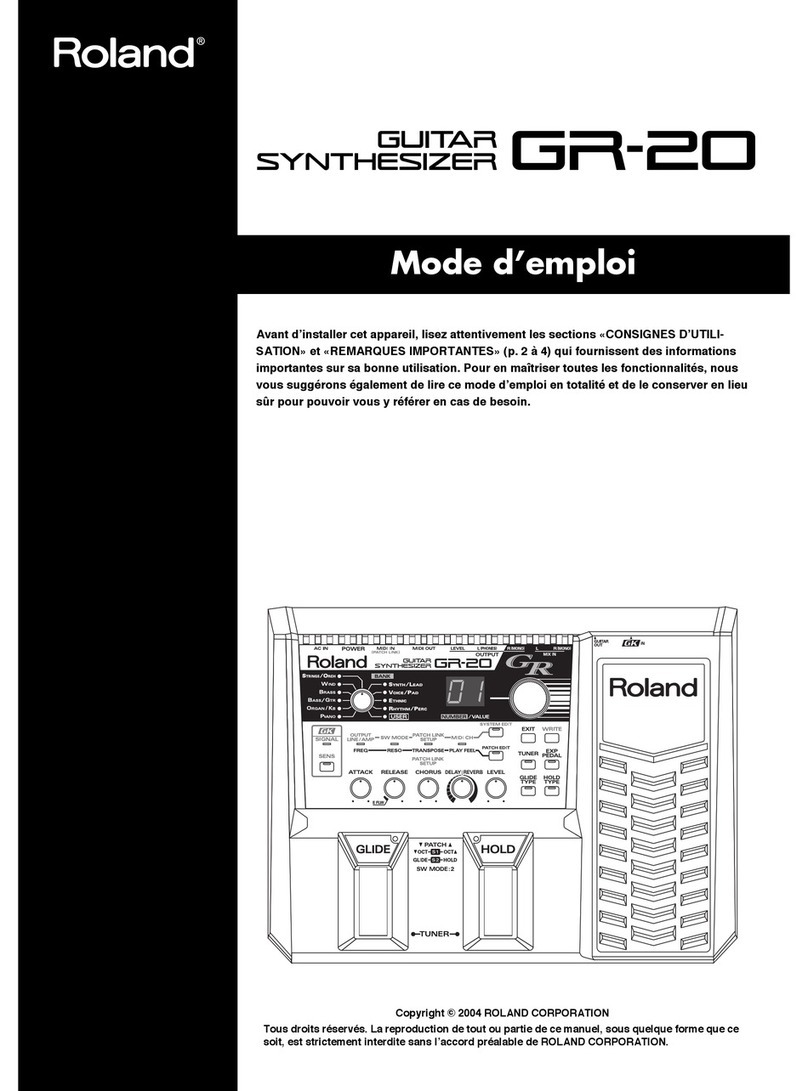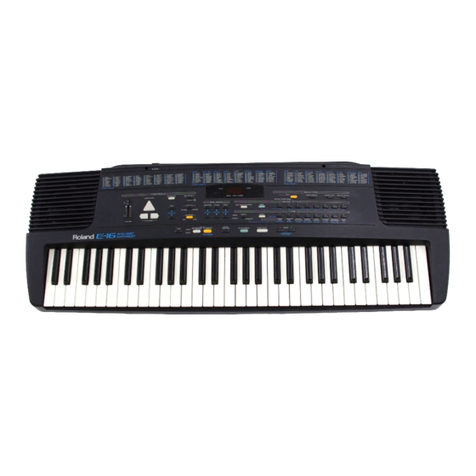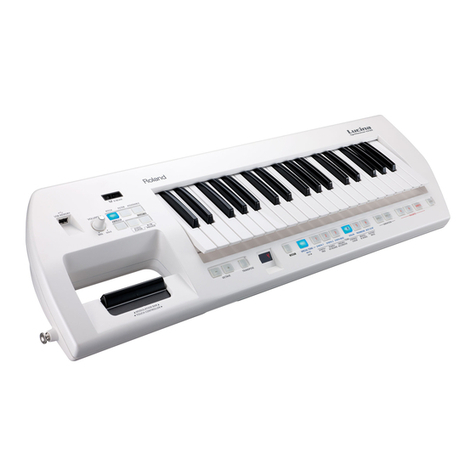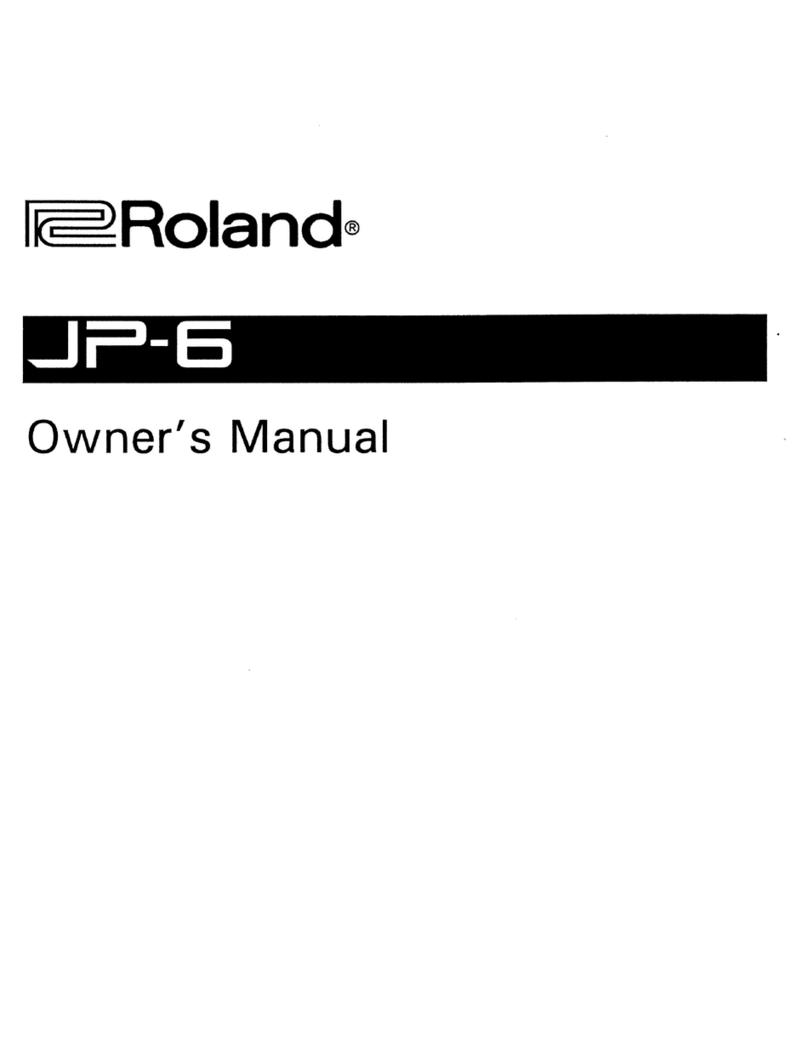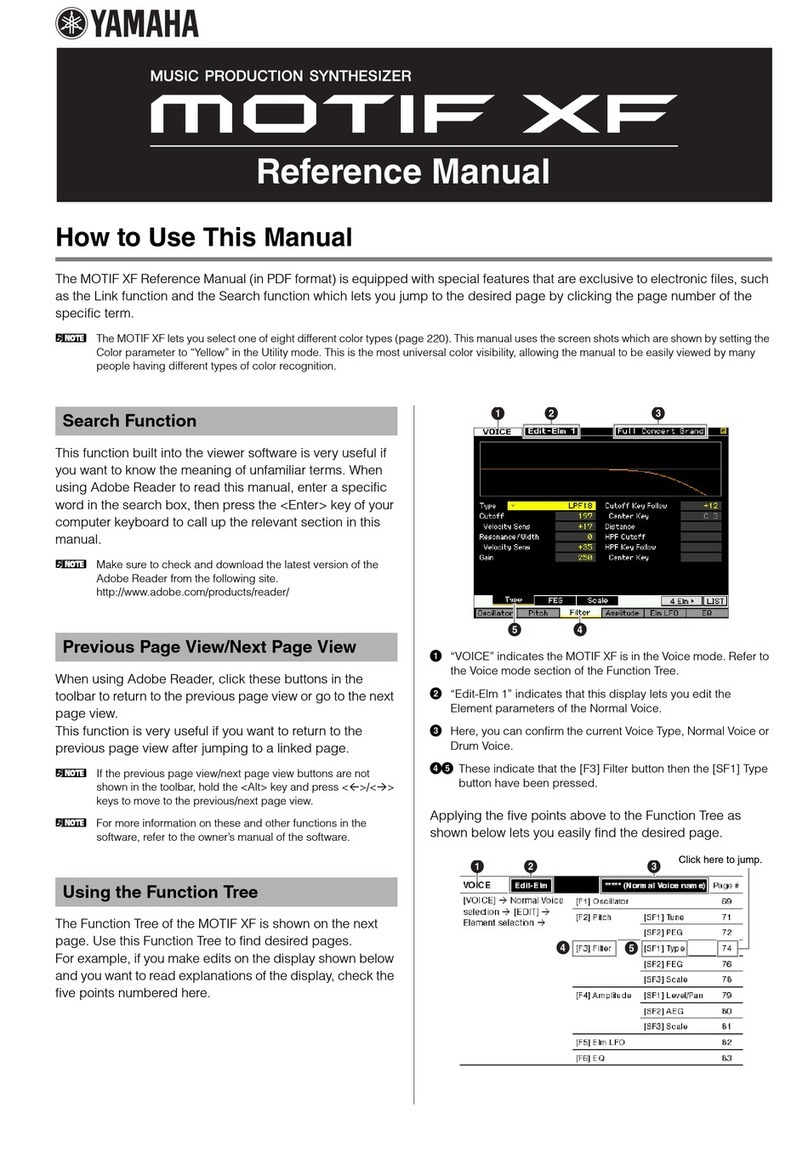\. CONTROLLE DVCO
PITCH =FREQUENCY
VCF
TONE COLOR =
HARMONIC CONTENT VCA
LOUDNESS *AMPLITUDE
CONTROLLER \
KEYBOARD The most common use of the key-
board control voltage is for the
control of the pitch of a VCO; the
pitch produced will correspond to
the key pressed.
The tone color of most instruments
will vary with pitch; higher pitches
often produce brighter tone colors,
lower pitches darker tone colors.
For this purpose, the VCF can be
controlled by the keyboard.
The control of loudness by means of
the keyboard is of little practical use;
the SH-1 has no provision for this
type of control.
ENVELOPE With some sounds, it is desirable to
incorporate pitch changes during the
production of each note.
The SH-1 contains aspecial envelope
generator (autobend) provided exclu-
sively for this purpose.
The tone color of many instruments,
particularly the wind instruments,
changes during the production of
each note. This effect can be produced
with envelope generator control of
the VCF. Raising the VCF RESO-
NANCE control will produce sounds
possible only on the synthesizer.
The loudness pattern (or articulation)
of asound is produced by using the
output of the envelope generator to
control the VCA.
LFO
(MODULATOR) The LFO (Low Frequency Oscilla-
tor) produces low frequency wave
forms. Using the LFO sine wave out-
put to control the pitch of the VCO
will produce vibrato effects. The LFO
square wave output will produce
trills.
With some sounds, the tone color
will vary at the same rate as vibrato.
This can be done with LFO control
of the VCF. Raising the VCF RESO-
NANCE control will produce "growl"
effects.
The SH-1 does not provide for LFO
control of the VCA; however, the
square wave output of the LFO can
be used for triggering the envelope
generators to produce rapidly repeat-
ing notes.
BASIC SYNTHESIZER THEORY
In the synthesizer, then, the three qualities of
sound are controlled by the VCO (pitch),
VCF (tone color), and VCA (loudness). The
tremendous versatility of the synthesizer is due
to the principle of voltage control. The above
table shows some of the possibilities.
The keyboard has two outputs: acontrol voltage
and agate pulse. The level of the control voltage
will correspond to the last key pressed. The
control voltage output is most often used to
control the frequency of the VCO, thus, when
8key is pressed, the VCO will produce the
pitch which is related to that key. The key-
board produces agate pulse each time akey is
pressed. The gate pulse is most often used to
trigger the envelope generator into operation.
The control voltage output of the envelope
generator, then, "opens" the VCA to let the
sound wave out, thus the synthesizer produces
sound each time akey is depressed.
The shape of the envelope is controlled by the
envelope generator sliders. When the sliders are
set, the envelope generator will generate acon-
trol voltage which corresponds to the shape of
the desired envelope. When this control voltage
controls the VCA, it regulates the loudness level
of the sound so that the loudness will rise and
fall in the desired pattern. Fig. 4shows the
output sound wave when the envelope generator
controls are set to produce aviolin-like envelope,
and Fig. 5shows the output sound for apiano-
or guitar-like envelope.
The tone color of many types of sound will
often change during the production of each
note. This can be done with the synthesizer by
using the output of the envelope generator to
control the VCF.
There are two other sources of control voltage:
the LFO (Low Frequency Oscillator) and the
S/H (Sample and Hold), each of which can be
used to control various synthesizer functions.
In the following pages, the functions of each of
the synthesizer elements is explained in detail.
When trying various sounds, try to analyze
exactly what is happening; this will give you a
better understanding of thesynthesizer. Synthe-
sizer sounds are very much enhanced by the use
of effects units such as echo chambers, re-
verberators, chorus effects, phase shifters,
flangers, etc, thus their use is highly recom-
mended.
FIG.
4
-VIOLIN-LIKE SOUND FIG. 5-PIANO-LIKE SOUND FIG. 6-PARTS OF ENVELOPE
-A*|*»D-
